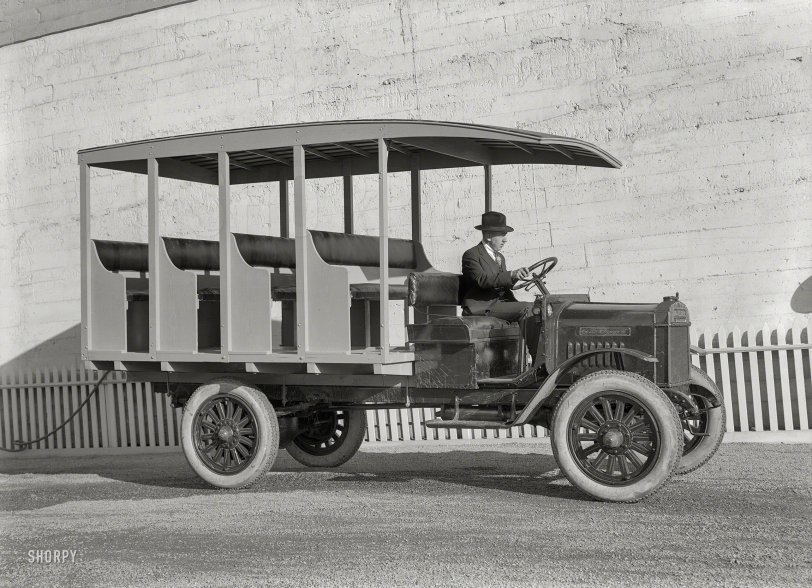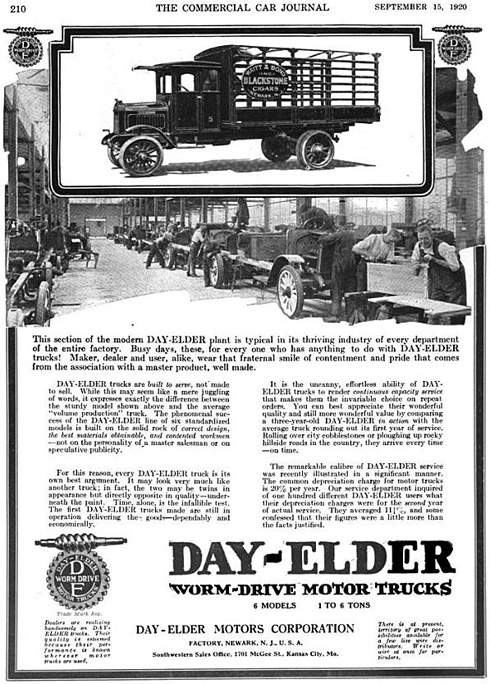


Framed or unframed, desk size to sofa size, printed by us in Arizona and Alabama since 2007. Explore now.
Shorpy is funded by you. Patreon contributors get an ad-free experience.
Learn more.

- Baldwin 62303
- Baldwin VO-1000
- Cold
- No expense spared
- Tough Guys
- Lost in Toyland
- And without gloves
- If I were a blindfolded time traveler
- Smoke Consumer Also Cooks
- Oh that stove!
- Possibly still there?
- What?!?
- $100 Reward
- Freeze Frame
- Texas Flyer wanted
- Just a Year Too Soon
- WWII -- Replacing men with women at the railroad crossing.
- Yes, Icing
- You kids drive me nuts!
- NOT An Easy Job
- I wonder
- Just add window boxes
- Icing Platform?
- Indiana Harbor Belt abides
- Freezing haze
- Corrections (for those who care)
- C&NW at Nelson
- Fallen Flags
- A dangerous job made worse
- Water Stop
Print Emporium
The Pewmobile: 1918

San Francisco circa 1918. "Day-Elder bus." Today's entry in the Shorpy Inventory of Obsolete Omnibi poses the question: How did its passengers get on and off, or from front to back, on a vehicle whose seats seem to extend the full width of the bus? 5x7 glass negative by Christopher Helin. View full size.
D-E Worm Drive
The ribbed radiator indicates that this Day-Elder is a 1920 Model C 2-1/2 ton truck, with a funky bus body. The plate on the side of the hood reads "Chester N. Weaver Co., San Francisco" - the longtime San Francisco Studebaker dealer who added the Day-Elder line in January 1920. The plate replaces one that read "D-E Worm Drive."
Water Hose
and it's not attached to the vehicle.
Answer RE: Cord
That is probably an electric bus, and that cord is the extension cord to power the vehicle.
Of course, the impracticality of that concept became evident once the bus was driven beyond 100 feet.
Make of the Truck Chassis?
This vehicle is obviously a custom-made wooden coachwork atop a standard truck chassis.
Notice the lack of headlights! This is a daylight sightseeing vehicle, which makes fixed loading platforms feasible. A resort hotel might have a vehicle like this.
If some well-equipped Shorpy Sleuth can please read the lettering on the side of the hood and on the radiator shell, we can pin down what sort of truck was used as the basis.
The spoked wheels are very attractive! I can't decide if they appear to be painted wooden spokes or steel spokes. In either case, the pin striping is spiffy!
Speculation:
Perhaps there is a "running board" on the left side of the "bus"?
Can anyone address what is hanging off toward the back of the bus? Maybe an "anti-theft device"?
Questions Answered?
Obviously, those questions are the reason it's empty.
Bungee loading system
Would-be riders grabbed the cord trailing from the rear and shouted out their weight. The physicist/driver made a quick trajectory calculation and accelerated accordingly. Passengers already on board had to duck for the the incoming. Disembarking was a little harsh, but at least required no complicated calculations.
Guessing Like a Horse
My guess is there was some kind of raised loading dock that this vehicle pulled up to, the same way public buildings (or at least the 1600's Friends Meeting House I went to nursery school at) had high and large blocks with steps on one side, to allow worshipers to mount and demount their horses.
They may have even used horse mounting stations, since horses were still common in 1918.
As for moving front to back--you don't.

























On Shorpy:
Today’s Top 5